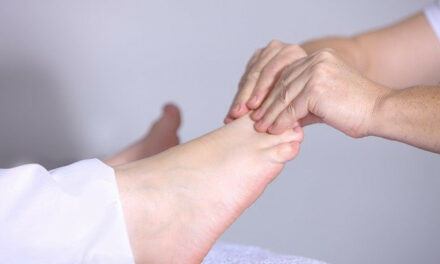Being a healthcare practitioner and researcher, I want to explain to you about Lyme disease and the importance of its cure because it is more common and more dangerous than you may think. Most importantly, you will also find out the effects of Japanese Knotweed on Lyme Disease. But, Is Japanese Knotweed Good for Lyme Disease?
Let’s find out…
For those people who probably don’t know much about Lyme disease or don’t understand it, bear with me while I explain it to you.
What is Lyme Disease?
Lyme borreliosis, commonly known as Lyme disease is an infectious disease caused by the Borrelia bacterium which spreads by infected black-legged ticks to humans.
As stated by Health departments and District of Columbia: each year, approximately 30,000 cases of Lyme disease are reported to the U.S. Centers for Disease Control and Prevention.
Symptoms of Lyme Disease
Symptoms of Lyme disease differ from one person to another person.
For example, you may find all of the below-mentioned symptoms in a Lyme disease patient, and in another patient, you may find just one instead of the lot.
Stages of Lyme Disease
Lyme disease is divided into two stages:
❖ Stage 1: Early localized Lyme disease
It might present as a flu-like illness such as:
➢ Fever
➢ Headache
➢ Chills
➢ Swollen lymph nodes
➢ Fatigue
➢ Most commonly Rashes appear on the body that sometimes shaped like a bull’s eye (Erythema migrans or EM rash)
❖ Stage 2: Late persistent Lyme disease
If a person will ignore early signs of Lyme disease, then it can get worse and can last from months to years.
Signs and symptoms of untreated Lyme disease include:
➢ Severe headaches,
➢ EM skin rashes,
➢ Facial paralysis, for example, Bell’s palsy
➢ Intermittent muscle, joint, tendon, and bone aches
➢ Heart disorders such as abnormal heartbeat, heart palpitations, commonly known as Lyme carditis
➢ Arthritis with extreme joint pain, stiffness, and swelling, particularly common in knees and least common in other joints such as wrists, elbows, and ankle,
➢ Common Neurological disorders e.g. tingling/itching in feet or hands, paralysis or numbness, nerve pain, dizziness, faintness, any mental confusion or not able to think clearly, memory loss, inflammation of the spinal cord and brain.

Tip: Muscle pain is different from the nerve pain and bone pain.
How to Identify Lyme Disease? The Diagnosis
As many signs and symptoms of Lyme disease are also found in other diseases, the Lyme disease can be hard to diagnose. Ticks (that are the leading cause of Lyme disease in humans) can also spread other diseases.
In case, Lyme disease rash does not appear on your body then a Lyme literate doctor can ask you questions like ‘whether you’ve been outdoors in the summer?’
Or, the doctor may ask something similar to this.
Moreover, Lyme disease blood tests help to identify antibodies to the bacteria and can help confirm or rule out the diagnosis. These tests show better results and are more reliable, a few weeks after an infection because your body has had time to produce antibodies to fight against Lyme disease.
Those tests include:
❖ Enzyme-linked Immunosorbent Assay (ELISA) Test
This test, also widely known as ELISA, is commonly used to detect Lyme disease. You cannot completely rely on this test because sometimes it provides false-positive results. Also, this test might not report correct results during the early stage of the disease. Still, the rash appearance is distinctive enough that a doctor can diagnose without further testing in people who live in ticks infested areas (such as wooded areas and fields) that transmit Lyme disease.
❖ Western Blot Test
If a positive result on the ELISA screening test, then the Western Blot Test is usually administered to confirm the diagnosis. In this two-step approach, this test detects antibodies to various B. burgdorferi proteins.

Tip: Did you know sciatica can be a result of Lyme Disease?
Is Lyme Disease Contagious?
There is no evidence to suggest that Lyme disease is contagious, and it cannot be transmitted from person to person.
To date, a person has not got infected from touching a person who is suffering from Lyme disease.
Now let’s talk about Japanese knotweed. Then I will explain to you the role of Japanese knotweed root in treating Lyme disease.
What is Japanese Knotweed?
Japanese Knotweed is a weed that spreads rapidly. It belongs to the plant family Polygonaceae: ‘Poly’ means many, and ‘gony’ is from the Greek for ‘knee’, giving ‘many jointed’.
The scientific name of Japanese Knotweed is Fallopia japonica. While people of Japan call it, itadori, which means ‘take away pain’. This plant dies in winters (back to ground level) and grows back in early summers.

About the Plant – What Does Japanese Knotweed Look Like?
Native to Eastern Asia, Japanese knot weed can grow to a height of 2-3 meters in the UK. It has flecked bamboo-like green and purple speckled hollow stems, arching branches and broad green shield-shaped leaves of up to 12cm long.
In late summer, small clusters of creamy white flowers appear at the tips of the stems. The rhizomes (underground horizontal plant stems) are modified plants that can stretch up to 7 meters from the parent plant and to a depth of 3 meters.
Reproduction of Japanese Knotweed
Reproduction in Japanese knot weed requires male and female plants (which involves males and females gametes). However, Japanese knot weed is an extraordinary example of alien invasive plant species that is derived from the same mother plant.
In total biomass terms, this clone is probably the largest female in the world. In Swansea alone, the infestation of Japanese knot weed approximately weighs 62,000 tonnes, which equals to 400 blue whales.
Japanese Knotweed, The Invasive Plant That Just Won’t Die
Fortunately, It is an invasive plant that can grow rapidly. You can find it anywhere and everywhere
e.g.
- Along streams and rivers
- In cracks in cement
- Roadside etc.
What Does Japanese Knotweed Do For The Lyme?
To treat Lyme disease, doctors and healthcare professionals choose between these three antibiotics such as:
i. Cefuroxime,
ii. Doxycycline,
iii. Amoxicillin.
But did you know that Japanese knot weed could be more effective than antibiotics at tackling the growing problem of Lyme disease?
Yes, it could increase blood flow to different body organs, especially to the heart, eyes, skin, and joints. Moreover, Japanese knot weed could be key to fighting Lyme disease, and it helps blood flow in reaching out of hard-to-reach areas to kill the organisms.
Japanese knot weed can stimulate the formation of new blood vessels and heals damaged ones (for example, burnt skin). It also prevents the growth of new vessels and blood flow in areas where it should not occur (for example, tumor formation).
Researchers from the John Hopkins Bloomberg School of Public Health found that antibiotics are not always effective over 2-4 weeks, and there are around 10%-20% of chronic Lyme disease patients that continue to experience symptoms after treatment.
What Does Research Say About The Effectiveness of Japanese Knotweed On Lyme?
Research conducted at Johns Hopkins University studied about 14 plant-based extracts and further compared their effectiveness against two antibiotics used to treat Lyme disease named doxycycline and cefuroxime.
And they noticed that among the 14 plants, Japanese knot weed was found to be the most effective. Also, Ghananian quinine results for curing Lyme disease were extremely well.
Some of the other plants that performed better than antibiotics include
- Cat’s claw,
- Black walnut,
- Sweet wormwood,
- Chinese skullcap and,
- Mediterranean rock rose.
These plants were found to be effective against the tick-carried bacteria responsible for Lyme disease.
Dr Ying Zhang from John Hopkins said: “This study gives the first strong evidence that few herbs were used by patients such as Japanese knot weed, cat’s claw, sweet wormwood, black walnut and Cryptolepishave potent activity against Lyme disease bacteria, especially the dormant persister forms, which are not killed by the current Lyme antibiotics.”
What Does Research Say About the Safety of Japanese Knotweed?
Researchers say it is safe to eat Japanese knot weed, and also it is an excellent source of Vitamins A and C and contains potassium, zinc, phosphorus, and manganese. It is available in capsules, and powder form, on various online sites.

Warning
Patients who have been affected by severe diseases or are currently suffering from the following serious illness such as the below are advised to eat Japanese knot weed after consulting their doctors/medical experts.
- Diabetes mellitus,
- Heart disease, e.g. Ischemic heart disease, or coronary artery disease,
- Cancer, e.g. lungs cancer, breast cancer, blood cancer
- Tuberculosis,
- High blood pressure,
- High cholesterol or any other serious/deadly disease
- Pneumonia
Conclusion
To end this discussion, I want to tell you that a positive attitude helps people to recover faster. Hence, if you want to cure of any illness (such as Lyme disease) and you are under any treatment method (such as Japanese knotweed) then it is very important that you believe that you will get better because your positive expectations will help your medication work better for you as being pessimistic may lower its effectiveness.







0 Comments